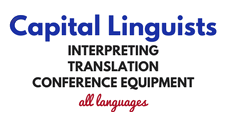If you are thinking about getting some documents translated, there are a few different process types to consider. These are human translation (HT), done by a human translator, machine translation (MT), done using a machine translation engine, and machine translation post-editing (MTPE), which is MT edited by a professional linguist before delivery. You are probably familiar with the most common MT engines, like Google Translate and DeepL, but it is important to consider the quality of the text these tools produce before deciding to use them for an entire document.
What Types of Machine Translation Are There?
There are various types of MT available. You may have seen examples of rule-based, example-based, or statistical MT. However, the most popular type of MT is neural machine translation, or NMT. Traditional online engines like Google have made the move toward NMT and away from statistical MT in recent years. NMT is, “an approach to machine translation that uses an artificial neural network to predict the likelihood of a sequence of words, typically modeling entire sentences in a single integrated model.”
Pros and Cons
The negative aspects of MT are perhaps already well documented, but the main issue is that it does not take into account several key factors. These include:
- Target culture
- Context
- Consistency of terminology
- Subject matter
- Audience
- Idioms and set phrases
We’ve all seen embarrassing translations where the machine translation engine has not recognized the correct context or used an unsuitable word. Literal translations are never a good idea. While NMT is working to eliminate some of these issues, especially in terms of context and terminology, it still has issues. The quality produced for common language pairs is bound to be better than less common ones, like German to Japanese, for instance. Also, MT often doesn’t pick up on spelling and terminology differences in language variants, like American English vs. British English. This can quickly alienate readers. The two main benefits of using MT over HT are cost and speed; machines produce much more content at a considerably lower price. Nonetheless, many still argue that MT should be used as a starting or reference point or if quickly checking something—it should never be published “raw.”
Meeting in the Middle
At Capital Linguists, we never use machine translation unless it is specifically requested, and this is usually in the form of MTPE. This allows our clients to combine the speed and lower costs of MT with the skills of professional post-editors. The typical approach to post-editing finds itself between traditional proofreading and straight translation. The editor reads the source text then checks the target translation and makes any necessary changes to it. The aim being to ensure that the final product is suitable in terms of tone, context, terminology, and target audience. You may also wish to have a professional proofreader or reviewer check the text following MTPE, which we can arrange for you as well.
